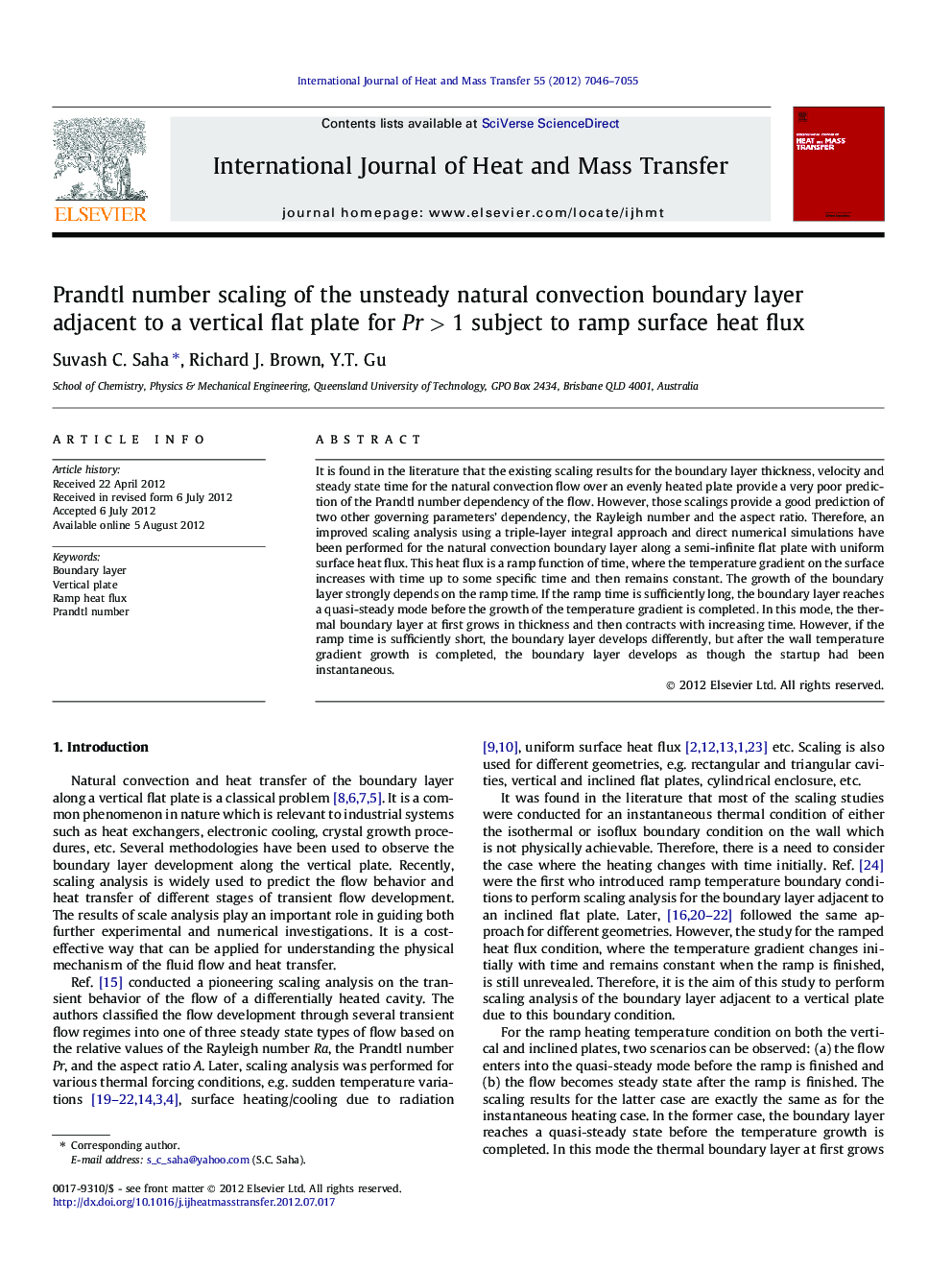| Article ID | Journal | Published Year | Pages | File Type |
|---|---|---|---|---|
| 658734 | International Journal of Heat and Mass Transfer | 2012 | 10 Pages |
It is found in the literature that the existing scaling results for the boundary layer thickness, velocity and steady state time for the natural convection flow over an evenly heated plate provide a very poor prediction of the Prandtl number dependency of the flow. However, those scalings provide a good prediction of two other governing parameters’ dependency, the Rayleigh number and the aspect ratio. Therefore, an improved scaling analysis using a triple-layer integral approach and direct numerical simulations have been performed for the natural convection boundary layer along a semi-infinite flat plate with uniform surface heat flux. This heat flux is a ramp function of time, where the temperature gradient on the surface increases with time up to some specific time and then remains constant. The growth of the boundary layer strongly depends on the ramp time. If the ramp time is sufficiently long, the boundary layer reaches a quasi-steady mode before the growth of the temperature gradient is completed. In this mode, the thermal boundary layer at first grows in thickness and then contracts with increasing time. However, if the ramp time is sufficiently short, the boundary layer develops differently, but after the wall temperature gradient growth is completed, the boundary layer develops as though the startup had been instantaneous.
